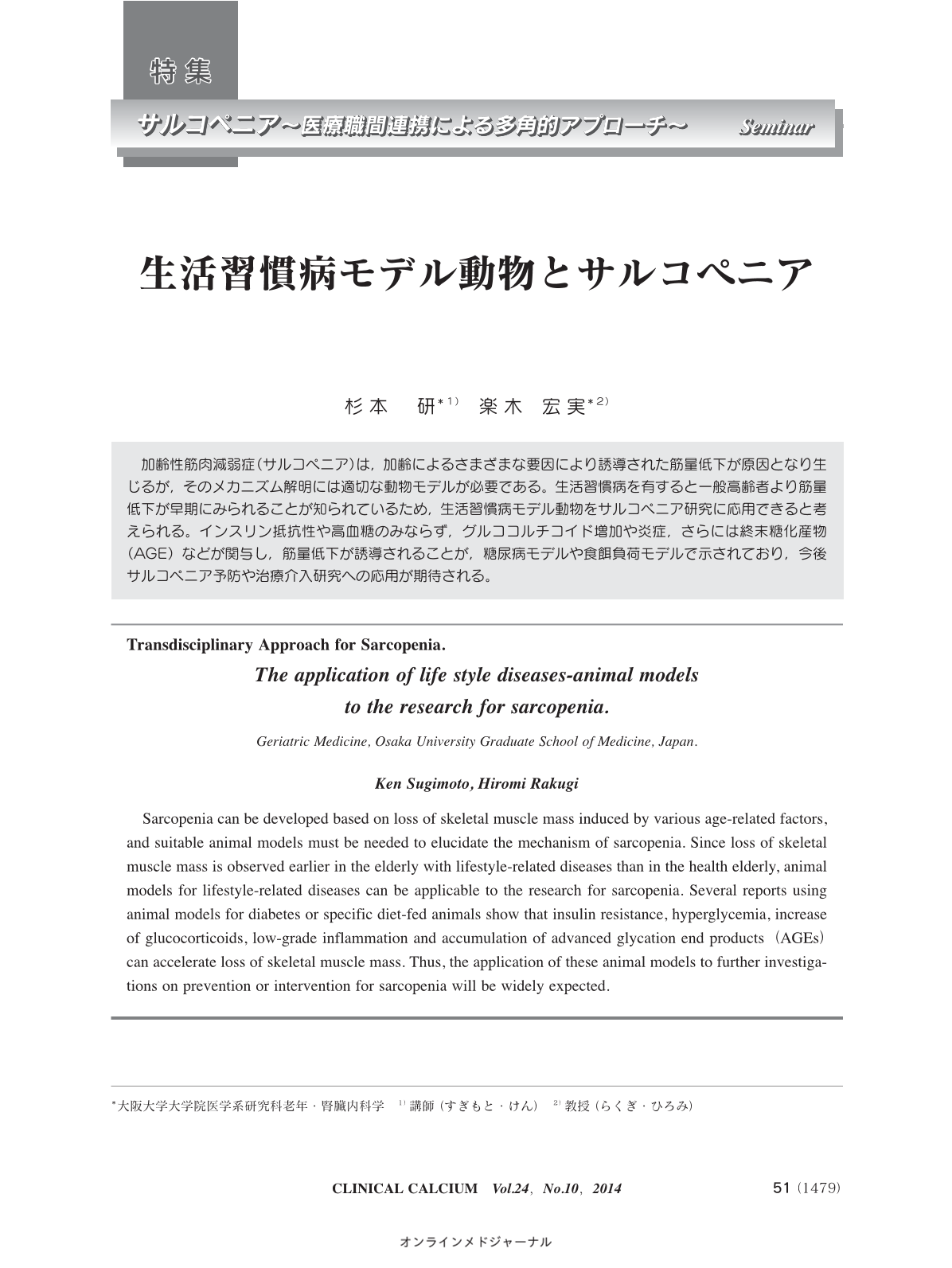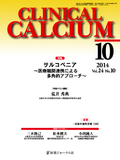Japanese
English
- 有料閲覧
- Abstract 文献概要
- 1ページ目 Look Inside
- 参考文献 Reference
加齢性筋肉減弱症(サルコペニア)は,加齢によるさまざまな要因により誘導された筋量低下が原因となり生じるが,そのメカニズム解明には適切な動物モデルが必要である。生活習慣病を有すると一般高齢者より筋量低下が早期にみられることが知られているため,生活習慣病モデル動物をサルコペニア研究に応用できると考えられる。インスリン抵抗性や高血糖のみならず,グルココルチコイド増加や炎症,さらには終末糖化産物(AGE)などが関与し,筋量低下が誘導されることが,糖尿病モデルや食餌負荷モデルで示されており,今後サルコペニア予防や治療介入研究への応用が期待される。
Sarcopenia can be developed based on loss of skeletal muscle mass induced by various age-related factors, and suitable animal models must be needed to elucidate the mechanism of sarcopenia. Since loss of skeletal muscle mass is observed earlier in the elderly with lifestyle-related diseases than in the health elderly, animal models for lifestyle-related diseases can be applicable to the research for sarcopenia. Several reports using animal models for diabetes or specific diet-fed animals show that insulin resistance, hyperglycemia, increase of glucocorticoids, low-grade inflammation and accumulation of advanced glycation end products(AGEs)can accelerate loss of skeletal muscle mass. Thus, the application of these animal models to further investigations on prevention or intervention for sarcopenia will be widely expected.



